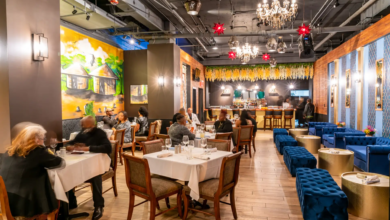Black Farmers Reviving Their African Roots: ‘We Are Feeding Our Liberation’

One Saturday morning in November, Xavier Brown was working in the Dix Street community garden in northeast Washington, D.C. The garden is near the Clay Terrace public housing complex in the heart of the city’s Ward 7, home to about 70,000 people, 94 percent of whom are African American.
Brown worked alongside six formerly incarcerated men to build a compost bin big enough to generate 1,200 pounds of rich soil, or what they call “black gold,” out of neighborhood food scraps. The compost is an essential ingredient for growing crops in the 32 garden beds they also made from donated and recycled plywood.
Within a few hours, more bins were close to being finished, with dozens of feet of steel hardware cloth protecting the food scraps inside from rodents and other animals.
“It was not looking like this this morning,” Brown says in amazement.
Brown formed a partnership with Boe Luther and Wallace Kirby, two gardeners from Ward 7 who started Hustlaz 2 Harvesters to offer people released from incarceration ways out of poverty into urban agriculture careers and other social enterprises. Brown, a certified master composter for the city, helped Luther and Kirby transform an empty lot into the Dix Street community garden as part of an urban agricultural initiative called Soilful City.
Only 1 in 10 Americans eats the daily recommendation of fruits and vegetables, according to the Centers for Disease Control and Prevention, and people living in poverty have especially low rates of consumption of fresh produce. Access to healthy produce is difficult in low-income communities like Clay Terrace, because major chain supermarkets are reluctant to locate their stores there. Ward 7 has only one large grocery store, and that means the people who live there have a harder time obtaining more fruits and vegetables to help reduce cardiovascular risk.
Yet Brown, Luther, and Kirby believe the community can grow its way out of food scarcity through the Dix Street garden and similar projects. They say crops that were staples of their African ancestors’ diets hold an essential key to restoring the community’s health.
“It’s not just about vegetables—we’re building a new way to rebuild neighborhoods,” Brown says.
“Black people need to return to being growers, builders, and producers, so when we’re consuming, we’re also feeding one another, and we’re feeding our liberation,” he says.
For instance, to transform the food landscape in Washington, D.C., Brown, Kirby, and Luther helped a neighbor grow bodi, a long string bean indigenous to central Africa. The bean provides many nutrients that are routinely missing from most Americans’ diets, including fiber and vitamins. In D.C., it’s helping reconnect the local population to their cultural heritage.
At the same time, the work of planting and harvesting helps build an environment and community that can facilitate healing from the traumatic legacy of land-based oppression—from slavery to more modern practices of racist covenants and housing redlining—that Black people in the United States have endured.
“This is the generation that only sees [agricultural work] as a part of plantation slavery,” Kirby says. He says the neighborhood used to be filled with garden beds and chickens, because most of the families had come from the rural South and brought their way of life with them.
A lot of that rural character was then lost, especially after the 1968 riots that tore through the city after the assassination of Martin Luther King, Jr.
























































